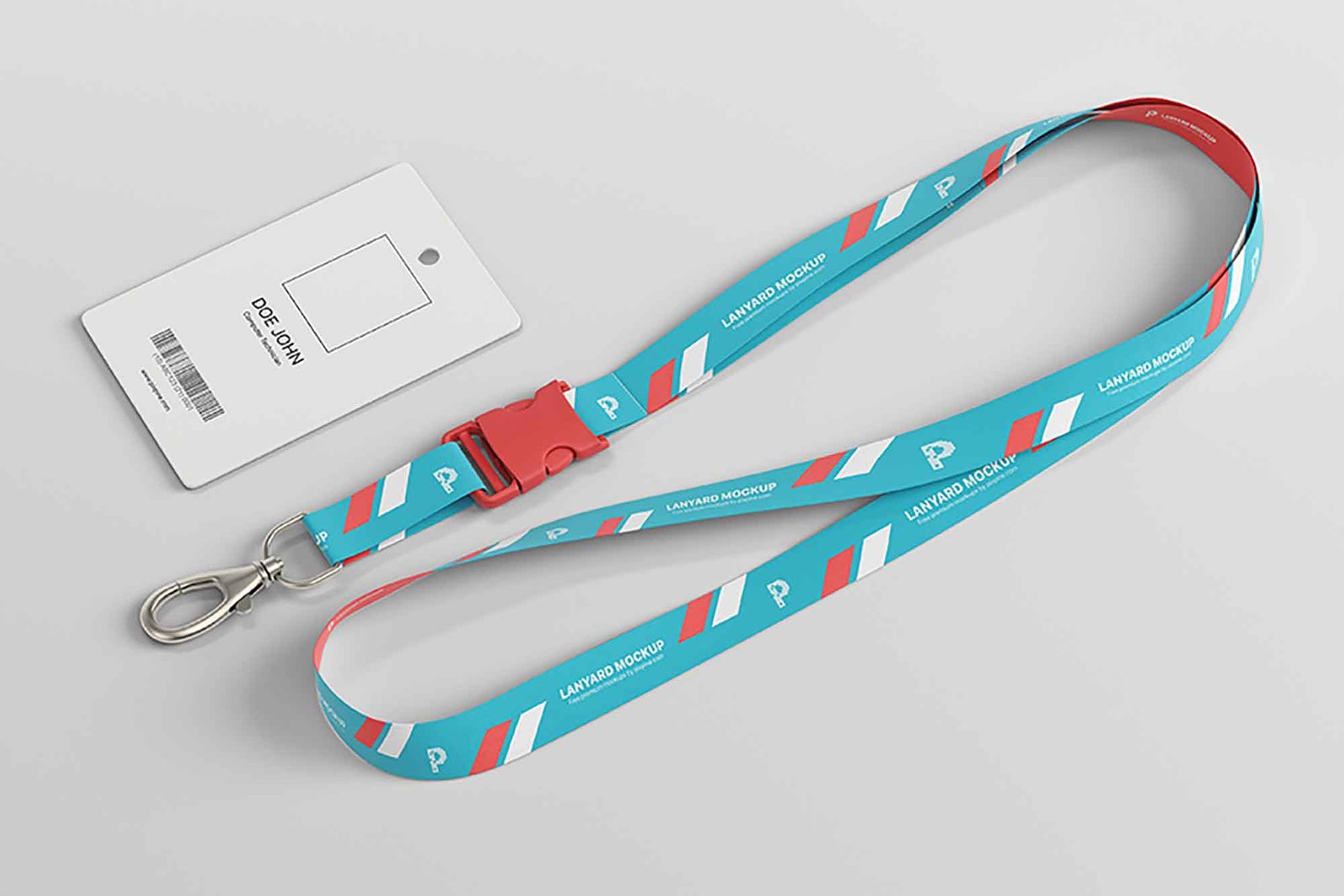
Introduction: The Journey of the Lanyard
Lanyards, though often overlooked, have a rich and fascinating history that spans centuries. These simple yet versatile cords, typically worn around the neck, have evolved from basic utility items to essential accessories in various fields, from military and maritime uses to educational and corporate environments. Today, lanyards are not only practical tools but also fashionable statements that reflect personal style and organizational branding. This article delves into the evolution of lanyards, exploring their origins, diverse applications, and transformation into trendy accessories.
Early Uses: Practical Beginnings
The earliest uses of lanyards can be traced back to the 15th century in France, where the term “lanière” referred to a strap or thong. Originally, lanyards were employed by soldiers and sailors to secure weapons, tools, and other essential items to their bodies, ensuring quick and easy access during critical moments. This practical use of lanyards soon spread to other professions, such as mountaineers and firefighters, who required secure yet accessible ways to carry their gear. The fundamental purpose of lanyards during these early years was purely functional, focused on enhancing safety and efficiency in demanding environments.
Military and Maritime Origins
Lanyards played a crucial role in both military and maritime settings. In the military, lanyards were used to attach weapons, such as pistols and swords, to soldiers’ uniforms, preventing them from being lost during combat. Sailors used lanyards to secure knives, whistles, and other tools needed for their daily tasks aboard ships. These lanyards were often made from durable materials like leather or woven cord to withstand harsh conditions. The designs varied, with some featuring decorative knots or braids, reflecting the skill and craftsmanship of the users. Over time, the use of lanyards in these settings became standardized, cementing their importance in military and maritime traditions.
Lanyards in Education and Industry
The adoption of lanyards expanded into education and industry during the 20th century. In educational settings, lanyards became popular for carrying identification cards, keys, and whistles among teachers, students, and staff. They provided a convenient way to keep essential items accessible while maintaining security and organization. In industrial environments, workers used lanyards to hold tools, ID badges, and safety equipment, ensuring they were always within reach. This practicality made lanyards indispensable in various sectors, from construction and manufacturing to healthcare and hospitality. The use of lanyards in these fields highlighted their versatility and ability to adapt to different needs and contexts.
The Rise of Event Lanyards
Event lanyards emerged as a significant trend in the late 20th and early 21st centuries. Conferences, trade shows, concerts, and sports events began using lanyards as a way to manage large crowds and provide attendees with easy access to identification, tickets, and promotional materials. These event lanyards often featured the event’s branding, logos, and colors, serving as both functional tools and marketing materials. The rise of event lanyards marked a shift towards more personalized and branded uses of lanyards, transforming them into essential accessories for large-scale gatherings and public events.
Lanyards as Corporate Branding Tools
Corporations quickly recognized the potential of lanyards as branding tools. Custom lanyards with company logos, slogans, and colors became commonplace in the corporate world. Employees wore these lanyards to hold their ID badges, keys, and access cards, promoting a sense of unity and brand identity within the organization. Lanyards were also used as promotional items at trade shows, conferences, and corporate events, providing companies with a cost-effective way to increase brand visibility. The versatility and visibility of lanyards made them ideal for reinforcing corporate branding and fostering a cohesive corporate culture.
Customizing Lanyards: A Personal Touch
The ability to customize lanyards has further fueled their popularity. Custom lanyards allow individuals and organizations to express their unique identities and preferences. From selecting specific colors and materials to adding personalized text and logos, customization options are virtually limitless. This personalization makes lanyards suitable for a wide range of purposes, including team-building activities, fundraising events, and awareness campaigns. Custom lanyards also provide an opportunity for individuals to showcase their creativity and style, transforming a simple accessory into a statement piece that reflects their personality or cause.
Materials and Manufacturing: From Cotton to Silicone
The materials and manufacturing processes used to create lanyards have evolved significantly over the years. Early lanyards were made from natural fibers like cotton and leather, which were durable but limited in design and functionality. Advances in technology and materials science have introduced a variety of new materials, including nylon, polyester, and silicone. These modern materials offer enhanced durability, flexibility, and customization options. Additionally, innovations in printing and manufacturing techniques, such as dye-sublimation and screen printing, have enabled more intricate and vibrant designs. These advancements have expanded the possibilities for lanyard design, making them more functional and aesthetically appealing.
Technological Innovations: Smart Lanyards
In the digital age, lanyards have embraced technological innovations to enhance their functionality. Smart lanyards, equipped with RFID chips, QR codes, and Bluetooth technology, have revolutionized the way lanyards are used. These smart lanyards enable seamless access control, cashless payments, and real-time tracking of attendees at events. In healthcare settings, smart lanyards can monitor patient data and streamline administrative processes. The integration of technology into lanyards has opened up new possibilities for convenience, security, and efficiency, making them indispensable tools in various high-tech environments.
Eco-Friendly Lanyards: Sustainable Choices
As environmental consciousness grows, the demand for eco-friendly lanyards has increased. Companies and individuals are seeking sustainable alternatives to traditional lanyards made from synthetic materials. Eco-friendly lanyards are made from recycled or biodegradable materials, such as bamboo, organic cotton, and recycled PET. These lanyards offer the same functionality and customization options as their traditional counterparts but with a reduced environmental impact. By choosing eco-friendly lanyards, organizations can demonstrate their commitment to sustainability and appeal to environmentally conscious consumers. The shift towards sustainable lanyards reflects a broader trend of incorporating eco-friendly practices into everyday products and accessories.
Lanyards in Fashion: A Style Statement
Lanyards have transcended their practical origins to become fashionable accessories. Designers and fashion brands have embraced lanyards, incorporating them into their collections and runway shows. High-end lanyards made from luxurious materials, such as leather and metal, are now seen as statement pieces that complement modern wardrobes. Trendsetters and influencers showcase stylish ways to wear lanyards, from layering them with other accessories to using them as unique bag charms. The fashion-forward evolution of lanyards highlights their versatility and ability to adapt to changing trends, proving that even the simplest accessories can make a bold fashion statement.
Celebrities and Trendsetters: Popularizing the Lanyard
The influence of celebrities and trendsetters has played a significant role in popularizing lanyards. High-profile individuals, including musicians, actors, and athletes, have been spotted wearing lanyards at events, concerts, and in everyday life. Their endorsement of lanyards as fashionable accessories has driven consumer interest and demand. Social media platforms have further amplified this trend, with influencers showcasing creative ways to incorporate lanyards into their outfits. The visibility and endorsement by celebrities have elevated the status of lanyards, transforming them into must-have accessories that combine style and functionality.
Lanyards in Pop Culture and Media
Lanyards have also made their mark in pop culture and media. From movies and TV shows to music videos and advertisements, lanyards have been featured as both practical tools and fashionable accessories. Iconic characters wearing lanyards have helped to cement their place in popular culture, making them recognizable symbols of authority, organization, and style. The portrayal of lanyards in media reflects their multifaceted nature and enduring appeal, showcasing their versatility and relevance in various contexts. This cultural representation has contributed to the widespread acceptance and popularity of lanyards across different demographics.
DIY Lanyard Projects: Crafting Your Own
For those who enjoy hands-on projects, DIY lanyard crafting has become a popular trend. Crafting your own lanyard allows for complete customization and creativity, from selecting materials and colors to incorporating unique designs and patterns. DIY lanyard projects can range from simple braided cords to intricate beaded designs, offering endless possibilities for personalization. Crafting lanyards can also be a fun and engaging activity for groups, such as schools, camps, and community organizations. The DIY approach to lanyards fosters creativity and self-expression, making each lanyard a one-of-a-kind accessory that reflects the maker’s personality and style.
The Future of Lanyards: Trends and Predictions
The future of lanyards is bright, with continued innovation and adaptation on the horizon. As technology advances, we can expect to see even more integration of smart features, such as biometric sensors and augmented reality capabilities, into lanyards. The trend towards sustainability will likely lead to the development of new eco-friendly materials and manufacturing processes. Fashion trends will continue to influence lanyard designs, making them stylish and functional accessories. The versatility and adaptability of lanyards ensure their relevance in a wide range of settings, from professional environments to everyday life. The evolution of lanyards is a testament to their enduring appeal and potential for future innovation.
Conclusion: From Function to Fashion Forward
From their humble beginnings as practical tools to their current status as fashionable accessories, lanyards have undergone a remarkable evolution. Read






